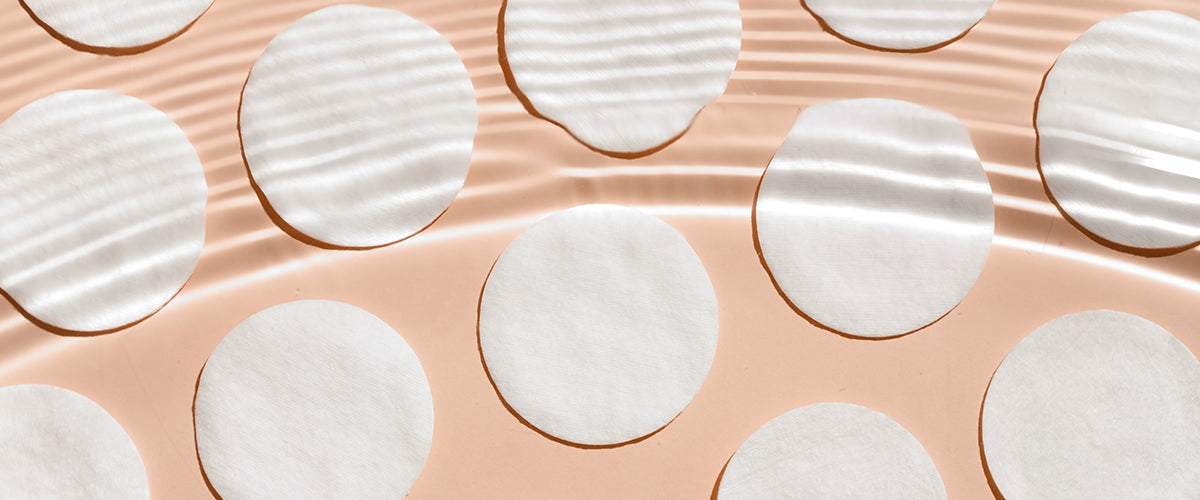
What is pH Level for Skin
Skin's pH
Skin is a versatile organ with demands. One of its multitasking roles includes barrier function against environmental influences. And skin's pH plays a critical role in this protective mechanism.

What is pH?
In textbook terms, pH stands for potential hydrogen (pH) and refers to the acidity level of substances. Need to go back to high school chemistry class for the time being? Read these quick notes to refresh to pH basics.
The pH is a numeric scale that ranges from 1 to 14, with 7 being "neutral." On the pH scale, values below 7 are acidic and above 7 are alkaline or non-acidic. To give you some context, solutions such as battery acid, lemon juice, and vinegar have an acidic, low pH level. Pure water, aka distilled water (not tap water), has a neutral pH level of 7, and products like baking soda and drain cleaner have an alkaline pH level.
Guess what? A healthy skin pH is more on the acidic side. So, what does acidity have to do with your skin?
Acid mantle and the importance of optimal pH
The slightly acidic pH is reliant on the skin's acid mantle. The acid mantle is a metaphor to indicate the protective quality of the mild acidic nature of healthy skin. Sebum (a mixture of free fatty acid) secreted by the sebaceous gland and natural moisturizing factors (NMF) become the acid mantle when mixed with lactic acid and various amino acids from sweat. This thin film on the skin acts as a first-line defense for bacteria, viruses, and other potential contaminants. The acid mantle also neutralizes alkaline-based aggressors, including harsh surfactant-based cleansers, prevents the growth of harmful bacteria, and restores and maintains the optimal acidic environment in which skin's natural microflora (skin-friendly bacteria) can thrive.
What effects does pH level have on our skin?
Skin performs its best between pH 4.5 and 5.75. The study published in the International Journal of Cosmetics Science (2006) revealed that the optimum pH level is just below 5. When skin's pH goes out of whack, becoming more acidic or more alkaline, the skin's protective layer can be compromised. If the skin's pH rises into the alkaline range, essential epidermal lipids cannot be produced. As a result, skin loses water retention and dries out.
Moreover, when the skin's barrier is damaged, it is less resilient and more sensitive to environmental triggers leaving skin dry, flaky, irritated, or hypersensitive. Alkaline skin condition includes rosacea and atopic dermatitis and accelerated aging. If the skin becomes more acidic, it tends to get inflamed. It increases the chances of inflammatory skin conditions like eczema and acne.
How can I tell what pH level skincare I need for my skin?
Throughout the life span, skin's pH changes from near-neutral pH of newborn skin to slightly acidic within the first year of life. Moreover, the skin's pH is constantly challenged by internal factors like age, hormones, and genetics, plus external aggressors such as pollution, temperature changes, and harsh chemicals. You can check your skin pH on your own using at-home pH kits. Or, visit a dermatologist for an in-depth analysis and skincare routine that works best for you.
Healthy lifestyle choices are non-negotiable in maintaining the optimal skin pH. A pH-balanced skincare routine also supports and maintains the skin's optimal pH, restoring its natural defenses. Usually, packaging displays the pH range of the products. Some labels may say 'pH-balanced,' which has a slightly acidic pH (4.5-5.5) unless the product is formulated to treat a specific medical condition. Experts advise using gentle skincare with mild surfactant-based cleanser not more than twice daily, avoiding over-exfoliation with AHAs, BHAs, alcohol-based toner, and adding a moisturizer for your skin type that helps strike the right balance of oil. These skincare habits leave your skin more resilient and less sensitive, carrying out its vital work of protecting us.
Reference: